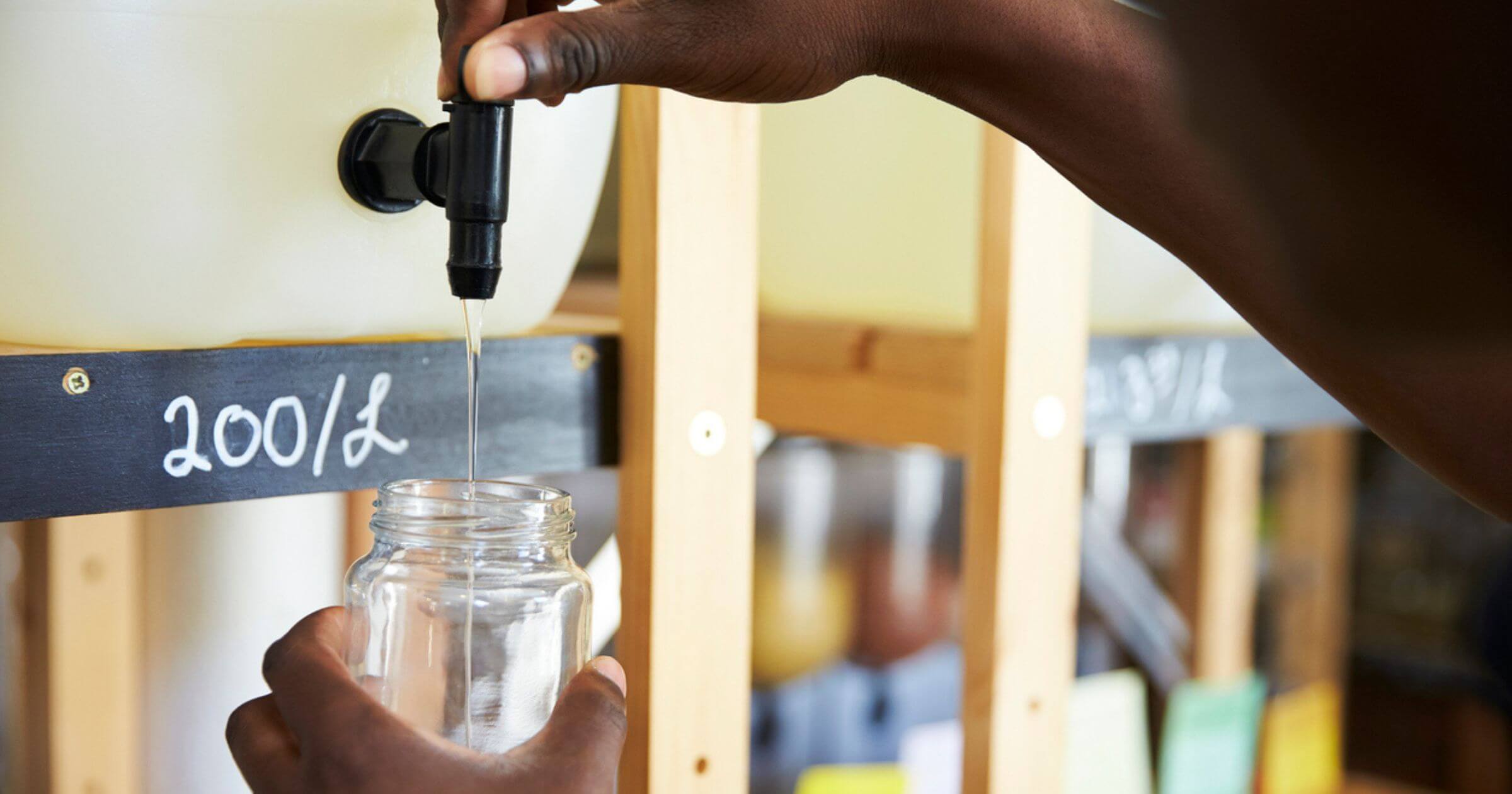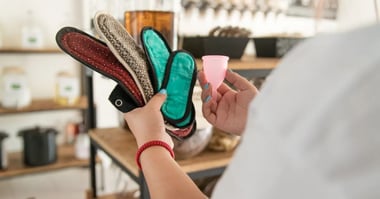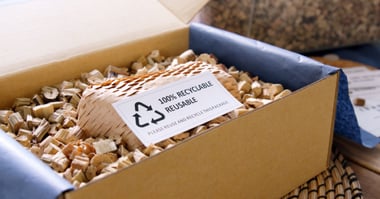
Beth Howell
Beth has been writing about the environment and climate change for over four years now – with her work being featured in publications such as The BBC, Forbes, The Express, Greenpeace, and in multiple academic journals.
When it comes to sustainability, consumer trends are constantly changing — with some industries being more impacted than others.
To investigate this further, our latest survey put the beauty industry under the microscope.
Among other interesting findings, our study revealed that the majority of beauty product consumers (63%) valued clean beauty as either ‘extremely important’ or ‘very important’ when choosing cosmetics.
Released in the build-up to Christmas, this survey also sheds light on how consumers can alter their buying habits this festive season. Let’s take a look at the results.
Want to check out the full findings? Head to our Clean Beauty Survey 2023 for more information.
What’s on this page?
01 | Key findings02 | The rise of the clean beauty industry
03 | A breakdown of clean beauty consumer trends
04 | 5 things you can do when buying clean beauty products at Christmas
05 | Methodology
06 | Summary
Key statistical findings
- 63% of respondents deem clean beauty as either ‘extremely important’ or ‘very important’ when selecting cosmetics
- 81% of our sample group believe that brands should actively reduce plastic packaging. However, nearly half (47.42%) of respondents are satisfied with recyclable plastic
- While 54% of these consumers are serious about preventing their favorite brands' products from ending up in landfills, over half doubt the authenticity of brands’ clean beauty claims
- 70% of respondents delve into a company's eco-credentials, compared to just 15% never investigating a brand's sustainability commitments
The rise of the clean beauty industry
It’s estimated that roughly a quarter (26%) of US consumers plan to buy beauty products over the holiday season, according to marketing research consultants NPD — with key areas including makeup, skincare, fragrance, and haircare.
And given the beauty industry produces at least 120 billion pieces of packaging each year, these Christmas purchases could be a blight on our planet.
Thankfully, as more consumers prioritize sustainability in their purchases, the clean beauty industry has grown massively in the past few years — and is estimated to grow by a further 14% in the next decade.
This demand for sustainable beauty products is particularly reflected on social media. In fact, the topic #CleanBeauty has over 2.1 billion views on TikTok and 6.3 billion tags on Instagram, as of October 2023.
But which areas of the beauty industry are consumers concerned about? Let’s find out.
A breakdown of clean beauty consumer trends
We asked a set of questions to over 500 consumers to gauge their opinions on the beauty industry, sustainable alternatives, and how brands should be acting.
Here’s what they had to say.
Consumers are willing to pay more for sustainable products
Sustainable packaging is gradually becoming more common on shop shelves and can include recycled materials, glass, hemp, bamboo, or reusable containers.
Despite lasting longer than single-use plastic, and being able to use them multiple times, these materials often ramp up the price of a product.
However, our survey found that many consumers are willing to pay a higher price for eco-friendly products.
In fact, 47% of respondents said they would pay more for products in sustainable packaging, with a further 20% saying it would depend on factors like the product quality, how much more they’d have to pay, and the specific brand.
On the flip side, 33% of people said they would not be willing to pay more money for products in sustainable packaging. This isn’t too surprising, considering many people are having to deal with the run-up to Christmas during the ongoing cost of living crisis.
This also indicates that the cost of sustainable beauty products still needs to come down to reach a wider audience and have a bigger impact on the planet.
Packaging is a key concern
We’ve all dealt with the notorious mountain of plastic waste after opening Christmas presents. This is especially true with beauty products, which often utilize plastic to protect the product, as well as for marketing purposes.
However, packaging is high on beauty consumers’ list of concerns, with 81% of the people we surveyed stating that brands should actively reduce plastic packaging.
As well as the outer packaging and boxing, there are some obvious design flaws with cosmetic product packaging. For example, 18% of respondents admitted they’ve thrown away beauty product packages that they knew were recyclable because they were too difficult to clean.
Clearly, this is an area of the beauty industry that needs drastic improvement.
But today’s shoppers aren’t just concerned with the products they’re using — they also care about the packaging that they come in. The top three materials consumers said they’d like to see clean beauty products in were recyclable plastic (47%), refillable containers (40%), and glass (39%).
Brands need to be a part of the change
Perhaps one of the most interesting and uplifting findings from the survey was that consumers are supporting brands that are voicing their environmental concerns.
People want to buy from brands that care.
When presented with the statement “I want to know how my favorite beauty brands are trying to stop their products from ending up in landfill or the ocean”, almost three-quarters of respondents said they either ‘strongly agreed’ or ‘agreed’.
In contrast, only 3% of respondents said they ‘disagreed’, and a further 1% said they ‘strongly disagreed’.
Likewise, 69% of respondents suggested that brands should also be encouraging their audience to adopt environmentally friendly behaviors. Acts like this could go a long way during this wasteful holiday period.
A portion of shoppers are skeptical about eco-claims
Consumers are often bombarded with ads in the run-up to Christmas. And although some brands use this as an opportunity to flaunt their eco credentials, some buyers seem to be scrutinizing these claims now more than ever.
This could be a result of the increasingly common greenwashing trend across industries.
When asked “To what extent do you believe that beauty brands are genuinely upholding their sustainability and clean beauty claims?”, the majority of respondents (49%) said they either ‘strongly believe’ or ‘somewhat believe’ brands.
However, a majority of people seem to be scrutinizing these claims a little more, with 51% of respondents saying they either ‘strongly disbelieve’, ‘somewhat disbelieve’, or ‘neither believe or disbelieve’ brands.
To break this down a little further, just under a fifth (17%) of respondents completely disbelieve brands’ eco claims, whilst a third of them are unsure. This suggests that brands need to make more of an effort to reassure customers and provide more transparency to their environmental claims.
One of the key ways people are approaching this issue is by carrying out their own research on brands.
Our survey found that 40% of consumers ‘always’ or ‘usually’ research a beauty brand’s sustainability credentials before making a purchase in-store or online, with a further 30% ‘sometimes’ carrying out this level of scrutiny.

5 things you can do when buying clean beauty products at Christmas
You don’t need to choose between buying new beauty products and lowering your impact on the environment this Christmas. Both can go hand-in-hand.
Here are a few simple things you can do to make sure you’re choosing clean beauty products that have a positive impact on the planet.
Look into sustainable beauty brands
The rise of the conscious consumer is continuing to grow, meaning more companies are adopting sustainable practices.
As a result, there are hundreds of sustainable beauty brands out there that take the environment into consideration — you just need to do a bit of research to see which ones you’re interested in.
For example, if you’re looking for a beauty product without packaging, you could check out Lush since 60% of its core range has no packaging in sight.
If you’re looking for brands that avoid waste in other areas, why not check out UpCircle Beauty? This innovative company sources and rescues by-products from other industries, and puts them towards the production of their own range.
Find more sustainable beauty brands by visiting CleanHub's Brand Directory — a list of brands working to reduce plastic waste.
Check out product ingredients
Clean beauty doesn’t just focus on plastic waste — it takes ingredients into consideration too.
It’s easy to forget that a lot of beauty products on the market contain harmful chemicals. For example, some researchers have found dangerous levels of mercury in anti-aging creams, whilst others have linked chemicals in hair dyes to breast and uterine cancer.
Many companies also end up wasting key ingredients on the production line. However, some brands, like Sunday Riley, are tackling this issue by turning these materials into animal food supplements and natural fertilizers.
By checking out the ingredients in your beauty product purchases, you could benefit both your loved ones and the planet this Christmas.
Assess the packaging
It’s the most wasteful time of the year. In fact, it’s estimated that people generate about 43% more waste during winter holidays — usually from wrapping paper, gift bags, tissue paper, food waste, and packaging.
One easy way we can avoid this is by looking into brands that wrap their products in sustainable materials, use recyclable plastic, or ditch packaging altogether.
There are plenty of clean beauty brands out there that are embracing the refillable product business model. In fact, refillable makeup products saw sales increase by 364% in the first half of 2022 alone.
And if you do decide to buy a product in plastic, it’s worth assessing whether it can be recycled or not — which brings us to our next point.
See whether the item can be recycled
A total of 104,946 tonnes of plastic packaging is thrown away (and not recycled) at Christmas in the UK. That’s the equivalent weight of 7,496 double-decker buses.
To curb this waste in your household, it’s worth familiarizing yourself with the recycling symbols on your beauty products, to make sure any waste goes in the right place once you’re done with it.
And remember, items need to be cleaned thoroughly before going into the recycling bin, otherwise they’ll be sent to landfill or incinerated.
Plastics are generally broken down into seven categories. However, the symbols and their recycling accessibility will vary depending on the country you’re based in. As an example, we’ve listed the seven types of plastic below, along with their recycling status in the UK:
- PET: Includes drinks bottles and some food packaging — Widely recycled
- HDPE: Includes cleaning product bottles and milk cartons — Widely recycled
- PVC: Includes car parts and window fittings — Not easily recyclable
- LDPE: Includes plastic bags and wrapping — Recycle at specialist points
- PP: Includes some types of tubs and trays — Widely recycled
- PS: Includes takeaway boxes and disposable cutlery — Not easily recyclable
- Other: Includes crisp packets and rice packets — Recycle at specialist points
Avoid products that have unnecessary waste
We recently carried out an interview with Daniel Cray, CEO of Phizz, and learned that adding unnecessary packaging can be a marketing technique for some brands, in a bid to take up more space on the shelves.
A simple marketing technique, but one that’s costing the planet.
If you want to avoid waste this Christmas, buy from clean beauty brands that reduce their packaging as much as possible — no unnecessarily bulky packaging in sight.
Methodology
In this survey, we interviewed a total of 523 people between the ages of 18 and 65, located in the US.
Our research looked at people who consider themselves the primary decision-makers when purchasing personal and healthcare products.
In addition to the general audience, we also shared our survey with the CleanHub community. The data was captured through an online survey that included 15 questions about clean beauty trends.
The data in this study was gathered in September 2023, and findings were analyzed and published in October/November 2023.
Summary
As the rise of the conscious consumer continues, industries have no choice but to adopt more eco-friendly practices. This is the right path for both our planet and the economy.
And when it comes to the beauty industry, consumers are clearly looking for brands that are working hard to limit their environmental impact — whilst also shouting about it and encouraging others to join them.
If brands listen to these concerns and adapt accordingly, we can make Christmas a more sustainable celebration that doesn’t wreak havoc on our planet year after year.
That’s why CleanHub partners with brands to improve their environmental impact and reduce plastic pollution. Take a look at how your beauty brand can end ocean plastic with a verified impact.

.webp)
.webp?width=380&name=ESG-presentation%20(1).webp)
.webp?width=380&name=Plastic-on-the-beach%20(1).webp)
.webp?width=380&name=Sorting-trash%20(1).webp)



.webp?width=380&name=Sales%20(1).webp)
.webp?width=380&name=Sustainable%20christmas%20(1).webp)

.webp?width=380&name=Buying-online%20(1).webp)
